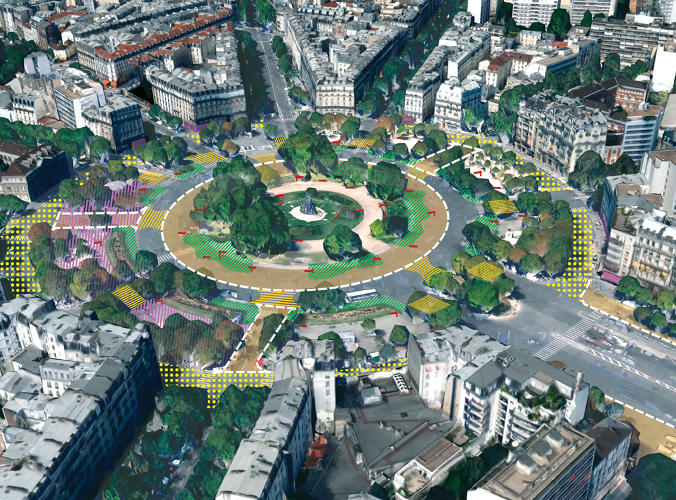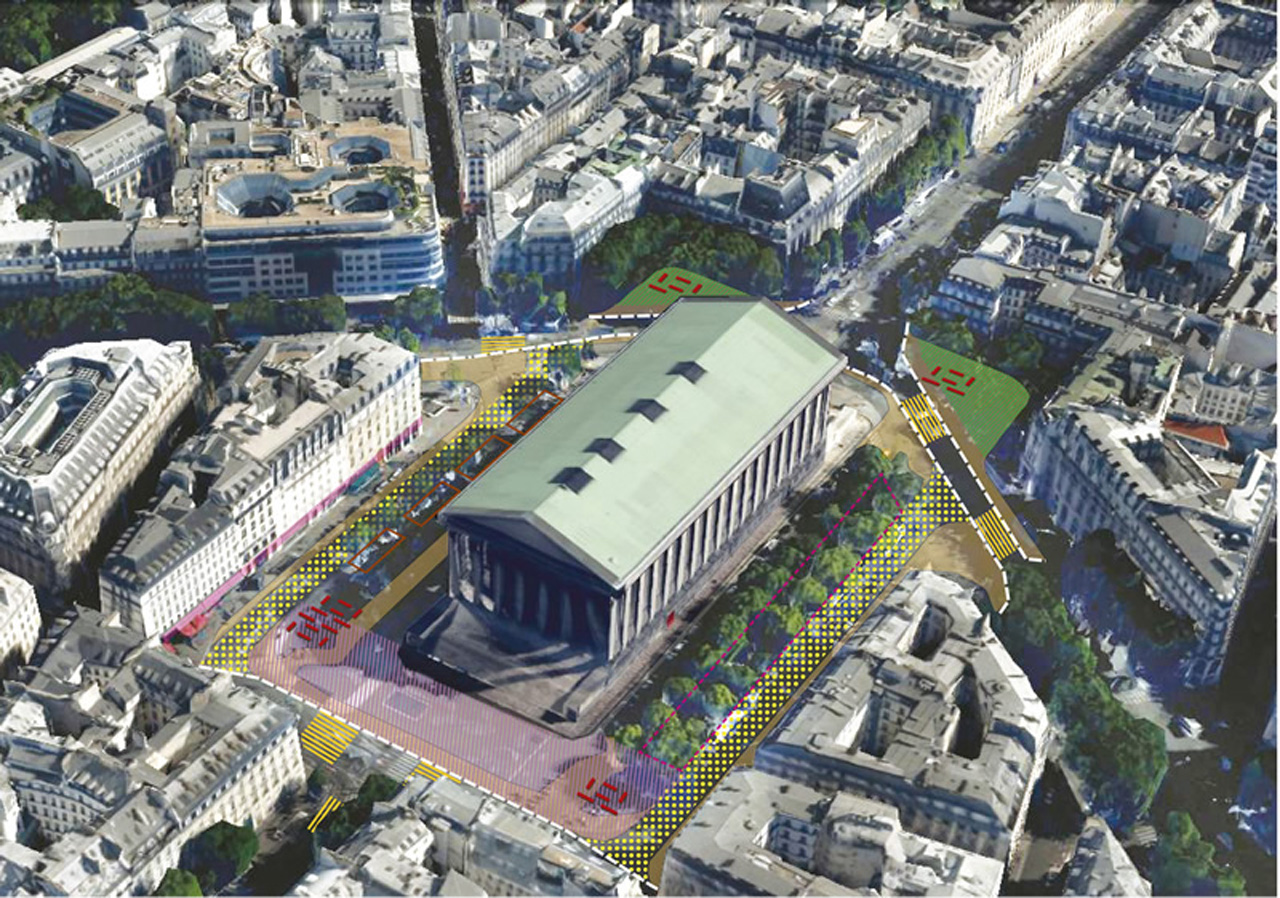立讀:王紀鯤 論西方都市,臺中市:逢甲書局,1973/01
作者說他只使用1960年代以後的資料。
Paris Is Redesigning Its Major Intersections For Pedestrians, Not Cars
The new designs make sure pedestrians get at least 50% of the public space, lanes of traffic be damned.

01 /10
The shift started with the Place de la République—until 2013, it was also a busy road, but now it's a pedestrian plaza planted with trees.
02 /10
The transformation was so popular that the city decided to keep going.
03 /10
Each of the new designs give pedestrians at least 50% of the space in the square.
04 /10
It takes away lanes of traffic even though each of the streets is a major route in the city.
05 /10
At the Place de la Bastille, the square will reconnect with a curb on one side, creating a new green space for people to sit.
06 /10
At the Place de la Madeleine, trees will mark off more pedestrian space and a new weekly market will be added.
07 /10
Cars may not ever completely disappear from the squares, or at least not for a long time.
08 /10
But the squares will be almost unrecognizable compared to the way that they are now.
09 /10
In some cases, the designs are based on data.
10 /10
With a set of temporary cameras, which count people anonymously, the city is able to measure how many people are walking and biking.
ADELE PETERS 04.08.16 6:00 AM
Right now, the Place de la Bastille in Paris is basically a traffic island: A huge memorial sits in the middle of a road packed with cars. There's no way to easily cross the street on foot. But that will soon change. The square is one ofseven major sites that Paris is redesigning for pedestrians and cyclists.
"Parisians are finding out that what were once admirable squares of theirs are now just intersections," says Jean Macheras, the Paris delegate of the FrenchTransportation Users Assocation.
The shift started with the Place de la République—until 2013, it was also a busy road, but now it's a pedestrian plaza planted with trees, lined with benches, and filled with people. The transformation was so popular that the city decided to keep going.

Each of the new designs give pedestrians at least 50% of the space in the square, taking away lanes of traffic even though each of the streets is a major route in the city. At the Place de la Bastille, the square will reconnect with a curb on one side, creating a new green space for people to sit. At the Place de la Madeleine, trees will mark off more pedestrian space and a new weekly market will be added.
In some cases, the designs are based on data. At the Place de la Nation—which has some green space now, but is surrounded by eight lanes of traffic—the city is partnering with Cisco and a company called Placemeter, an "urban intelligence platform" that helps quantify how public space is used. With a set of temporary cameras, which count people anonymously, they're able to measure how many people are walking and biking, where cars are at any specific location, even how many retirees are playing pétanque.
Placemeter will work with the city to start testing different scenarios, such as what happens if streets are closed in a certain location for a month, or what happens if benches and chairs go in another place, or what happens if bike lanes expand.

"We're providing for the first time to the city of Paris a dynamic tool to be able to experiment with streetscape redesign, or placemaking, in an agile way, and avoid spending tens of millions of euros in projects that haven't been tested in real life before," says Martin Lagache from Placemeter. The formal redesign of that square will start in 2017.
Cars may not ever completely disappear from the squares, or at least not for a long time. "It is hard to imagine a future where cars will have entirely disappeared from Paris, especially as there will be a place for them as commercial or shared vehicles," says Macheras. "Also, the car lobby counters with the lure of the electric cars, which take as much space as internal combustion cars."
But the squares will be almost unrecognizable compared to the way that they are now. "Those plazas are giant vehicle messes, with all the noise and pollution that goes with it, whereas they could be open places where you could breathe," says Lagache. "And talk to any Parisians, they will say the same. You don't want to spend too long in those chaotic Paris squares."
All Images: © Sophie Robichon - Mairie de Paris
沒有留言:
張貼留言